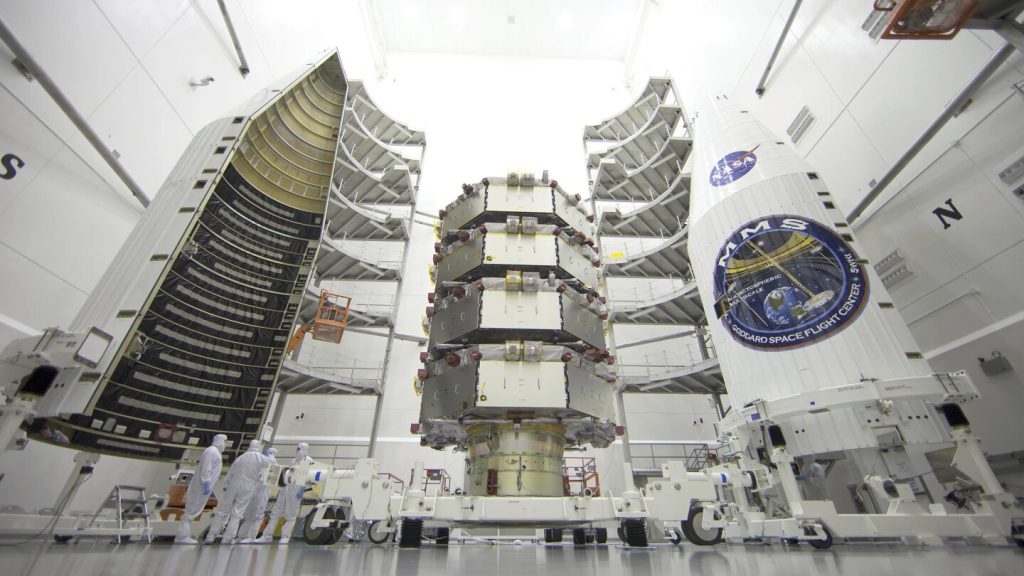Chorus Waves: A Symphony of Chirps in Earth’s Magnetosphere
The vast expanse of space, once perceived as a silent void, is increasingly revealing itself to be a vibrant symphony of electromagnetic waves. Among these cosmic melodies, a peculiar chirping sound has captivated scientists – the chorus waves. These bursts of plasma, oscillating at frequencies within the range of human hearing, have been detected in various regions of Earth’s magnetosphere, the magnetic bubble surrounding our planet. While the phenomenon itself is not new, a recent discovery of chorus waves at an unprecedented distance from Earth has opened up new avenues of inquiry into their origin and significance.
Chorus waves have been likened to the chirping of birds, a surprisingly relatable analogy for a phenomenon occurring in the cold vacuum of space. These waves are generated by the interaction of charged particles, primarily electrons, with Earth’s magnetic field lines. The electrons, spiraling along the magnetic field lines, get energized and emit these characteristic chirping waves. While the precise mechanism of their generation is still under investigation, the prevailing theory suggests that the waves are produced through a process called wave-particle interaction, where energy is exchanged between the electrons and the waves.
The recent discovery of chorus waves at a distance of over 62,000 miles (100,000 kilometers) from Earth, published in the journal Nature, marks a significant milestone in our understanding of these enigmatic waves. Previous detections had been confined to regions closer to Earth, such as the radiation belts, where the interaction of charged particles with the magnetic field is more intense. This new finding, however, places the chorus waves in a region of the magnetosphere where the magnetic field is stretched and distorted, a region where scientists did not expect to find such intense wave activity. This unexpected location suggests that the mechanisms governing the generation and propagation of chorus waves may be more complex than previously thought.
The discovery was made by NASA’s Magnetospheric Multiscale (MMS) satellites, a quartet of spacecraft designed to study the Earth’s magnetosphere in unprecedented detail. Launched in 2015, the MMS mission has been instrumental in unraveling the complex dynamics of this region, including the intricate interactions between the Earth’s magnetic field and the solar wind, a stream of charged particles emanating from the sun. The high-resolution data collected by the MMS satellites enabled scientists to pinpoint the location and characteristics of the distant chorus waves, providing crucial clues to their origin and propagation.
The implications of this discovery extend beyond the mere detection of chorus waves in a new location. These waves, though seemingly innocuous, play a significant role in the dynamics of the Earth’s magnetosphere. They can accelerate electrons to extremely high energies, creating a population of "killer electrons" that can pose a threat to satellites and spacecraft in orbit. These high-energy electrons can penetrate the shielding of electronic components, causing malfunctions and even permanent damage. Understanding the mechanisms behind the generation and propagation of chorus waves is therefore crucial for mitigating the risks they pose to space-based assets.
Moreover, the discovery of chorus waves in the distant magnetosphere offers new insights into the fundamental physics governing the interaction of charged particles with magnetic fields. This interaction, a fundamental process in plasma physics, is not limited to Earth’s magnetosphere but occurs throughout the universe, from the solar corona to distant galaxies. By studying chorus waves in Earth’s magnetosphere, we can gain a deeper understanding of these fundamental processes, which are relevant to a wide range of astrophysical phenomena. The chirping chorus, once considered a mere curiosity, is now recognized as a valuable tool for probing the mysteries of the cosmos.
The research on chorus waves is ongoing, with scientists continuing to analyze the data from the MMS mission and other spacecraft. Further studies are needed to fully understand the mechanisms responsible for the generation and propagation of these waves, as well as their impact on the Earth’s magnetosphere and space weather. The chirping chorus, a subtle yet powerful symphony played out in the vastness of space, continues to intrigue and challenge our understanding of the universe around us. As we delve deeper into the intricacies of this cosmic melody, we uncover new layers of complexity and gain a profound appreciation for the intricate interplay of forces that shape our solar system and beyond.

